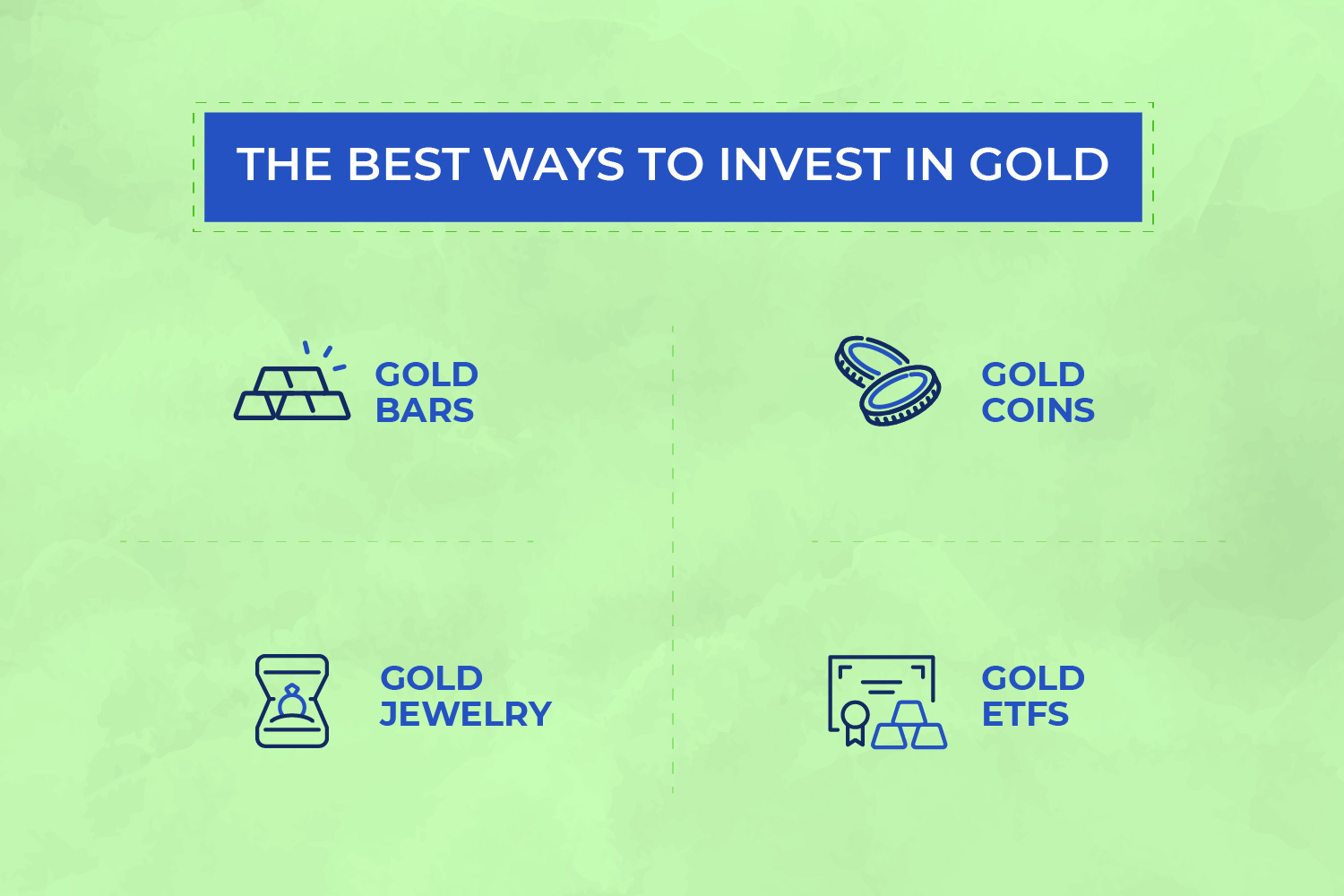With inflation on the rise and causing various challenges, many investors are seeking alternative investment options, such as gold, to preserve the value of their portfolios. While investing in gold does come with its own set of challenges due to the variety of available options, it offers unique benefits to many people.
Throughout history, gold has been a reliable investment during times of inflation, economic instability, and even war. Today, a growing number of investors are turning to gold to safeguard their wealth.
Investing in gold isn't limited to physical gold, such as bars or coins. You can also invest in gold through exchange-traded funds (ETFs) that are now widely available through many investment companies. In this article, we’ll guide you through everything a beginner needs to know about gold and how to start investing in it.
How to Invest in Gold?
There are several ways you can invest in gold and build the wealth you’re aiming for. However, before you start, it's important to have a clear investment strategy and ensure it aligns with your goals and risk tolerance.
What Are the Best Ways to Invest in Gold?
1- Gold Bars
When most people think about investing in gold, the first thing that comes to mind is buying large gold bars that they can store in a safe, either at home or in a bank. Gold bars come in various sizes and weights, ranging from 1 gram to 100 grams. Given the high price of gold, this type of investment can be quite costly.
Due to the high cost, it’s essential to buy from a trusted dealer or jeweler and ensure your gold is secure. You might want to rent a bank vault to store your gold bars safely. If you decide to invest in gold bars, it's also a good idea to keep an eye on gold prices, so you can buy at the right time, as gold prices fluctuate regularly.
2- Gold Coins
Gold coins, such as sovereigns or Krugerrands, come in different weights, including 1/16, 1/8, 1/4, 1/2, and a full coin. Some coins can even come in sets of five. These coins are typically made from 22k or 24k gold. If you have smaller savings, investing in gold coins might be a better option than small gold bars, which often carry higher fees for minting and craftsmanship.
If you have a larger budget, it’s more cost-effective to buy larger gold bars, as you’ll receive a better return on your investment.
3- Gold Jewelry
Another option is to invest in gold jewelry that you can wear. However, this type of investment carries more risk compared to raw gold or bars.
First, you need to be very careful when purchasing gold jewelry since not all stores are trustworthy. To avoid scams, it’s crucial to buy your jewelry from a reputable jeweler and obtain all necessary documentation.
Secondly, you'll pay a premium for the craftsmanship and design of the jewelry, which can range from 20% to several times the value of the raw gold. Additionally, make sure you know the purity of the gold in your jewelry, as this affects the resale value. Purity is measured in carats, with 24 carats being pure gold.
4- Gold ETFs
Investing in gold ETFs offers you the opportunity to benefit from the stability of gold over the long term while also enjoying more liquidity and diversification than physical gold. You can also start with smaller amounts and benefit from lower fees, as ETFs often have lower costs compared to physical gold.
ETFs also provide secure storage services, as the gold is stored in regulated financial institutions. This eliminates concerns about theft or damage.











